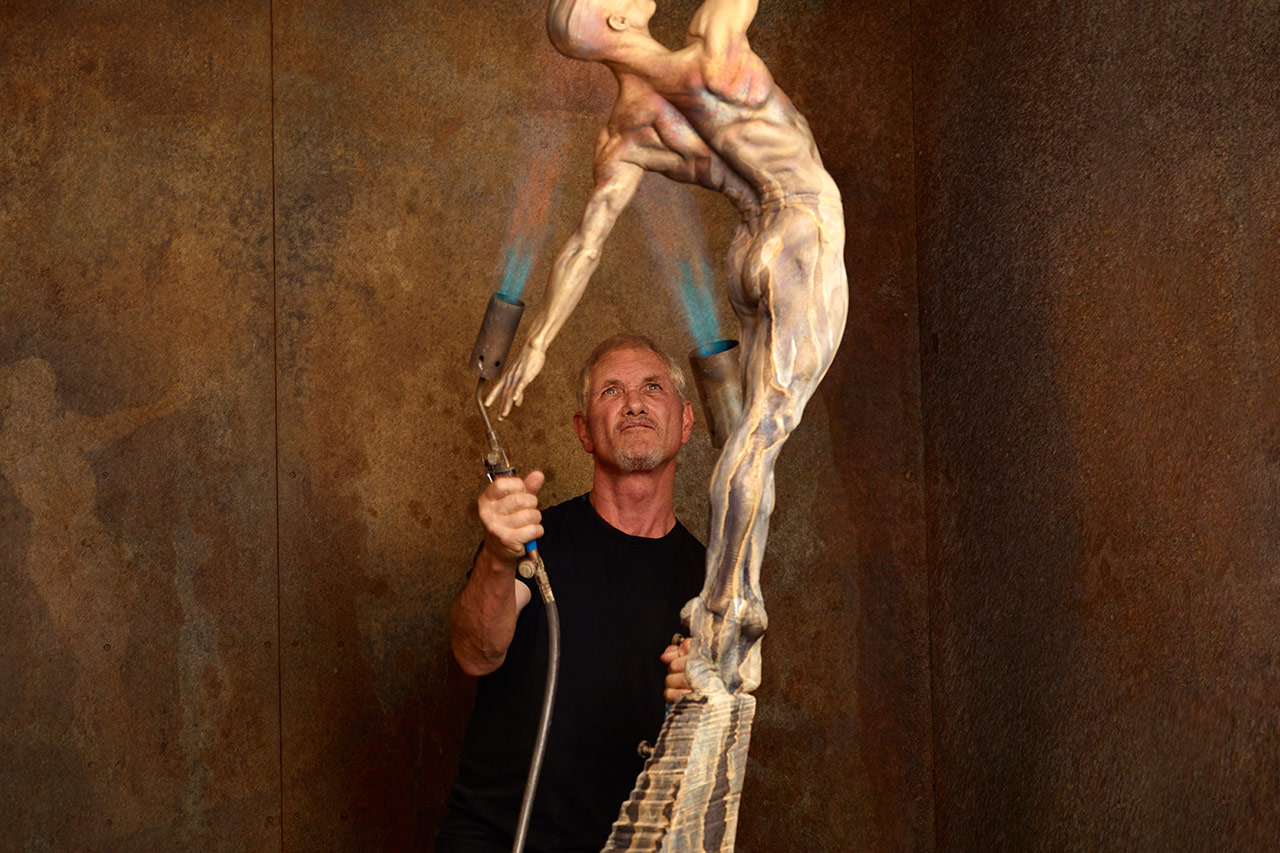About the Artist
Educated in painting and illustration at the Art Center College of Design, MacDonald was successful as a commercial illustrator until his late thirties when a fire destroyed his studio, along with the accumulated works of his career as painter and illustrator. Subsequently, he began sculpting in earnest and within ten years became one of the most collected present-day figurative sculptors in America. His work has been acquired for the permanent collections of corporations such as AT&T, IBM, and Anheuser-Busch, as well as notable private collections. His work has been described as "paying tribute to the eloquence of the human form." He is an advocate of neo-realism and figurative art, and has fostered emerging and professional artists through annual international Masters Workshops.
Method
Artist in London Studio sculpting dancer Sergei Polunin MacDonald's work portrays "the beauty of the human body and the spirit that drives it." He works consistently with models throughout the process of creating a sculpture, often celebrated dancers, performers, and athletes. MacDonald draws and sculpts his subjects over and over, often requiring models to repeat a specific dance move or spontaneous gesture. This may include small, quick sketches or "maquette" in an oil-base plasticine clay. Using the "lost wax" method, MacDonald cast the works of art into bronze. Using an artist method of patina, MacDonald alters the surface color of the final composition. The completed patinated bronze is affixed to a marble base, also designed and selected by the artist as part of the overall sculptural composition.
Monuments The Flair
For the 1996 Summer Olympics, MacDonald created The Flair, a 26-foot-tall sculpture of a gymnast. As with all the monuments he has completed, MacDonald designed the plaza on which The Flair sits, including a large reflective pool and fountain.
U.S. Open Golf Championship
The 15-foot-tall, 10,000-pound sculpture sits atop a 22,000-pound granite base, installed at the Peter Hay Golf Course in Pebble Beach, California to commemorate the 100th U.S. Open Golf Championship. The sculpture accurately portrays the mechanics of an ideal golfer swing. The granite base features the names of the first 100 winners of the U.S. Open. The reverse side provides space for the next hundred winners.
The Royal Ballet School
MacDonald has started work on The Grand Coda, a memorial to Dame Ninette de Valois, founder of The Royal Ballet and The Royal Ballet School. The monument is to be installed at White Lodge in Richmond Park, London, England, a historic royal retreat that is now home to The Royal Ballet School. This work-in-progress is currently in development at the artist's studios in California and London.
Additional commissions
Additional monument commissions include: Rain, City of Concord, California, 1992; Secretary of State William H. Seward, Z. J. Loussac Public Library, Anchorage, Alaska, 1990; Architectonica, MGM Film Group, Inc., MGM Corporate Center, 1987; Stephen F. Austin, Texas Susquicentennial, Stephen F. Austin University, Austin, Texas, 1986; and The Gymnast, permanent collection of The National Art Museum of Sport, 1986.
